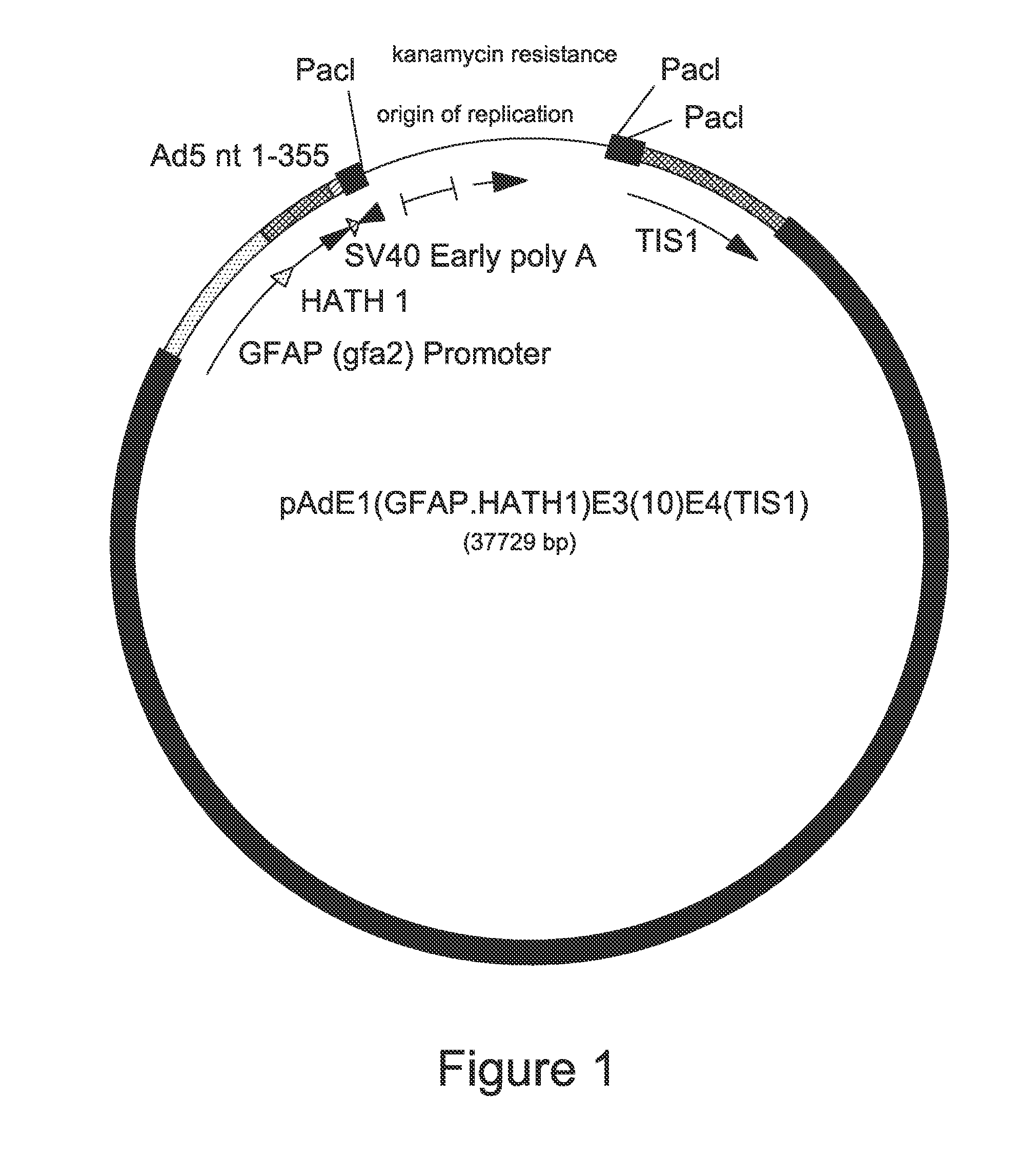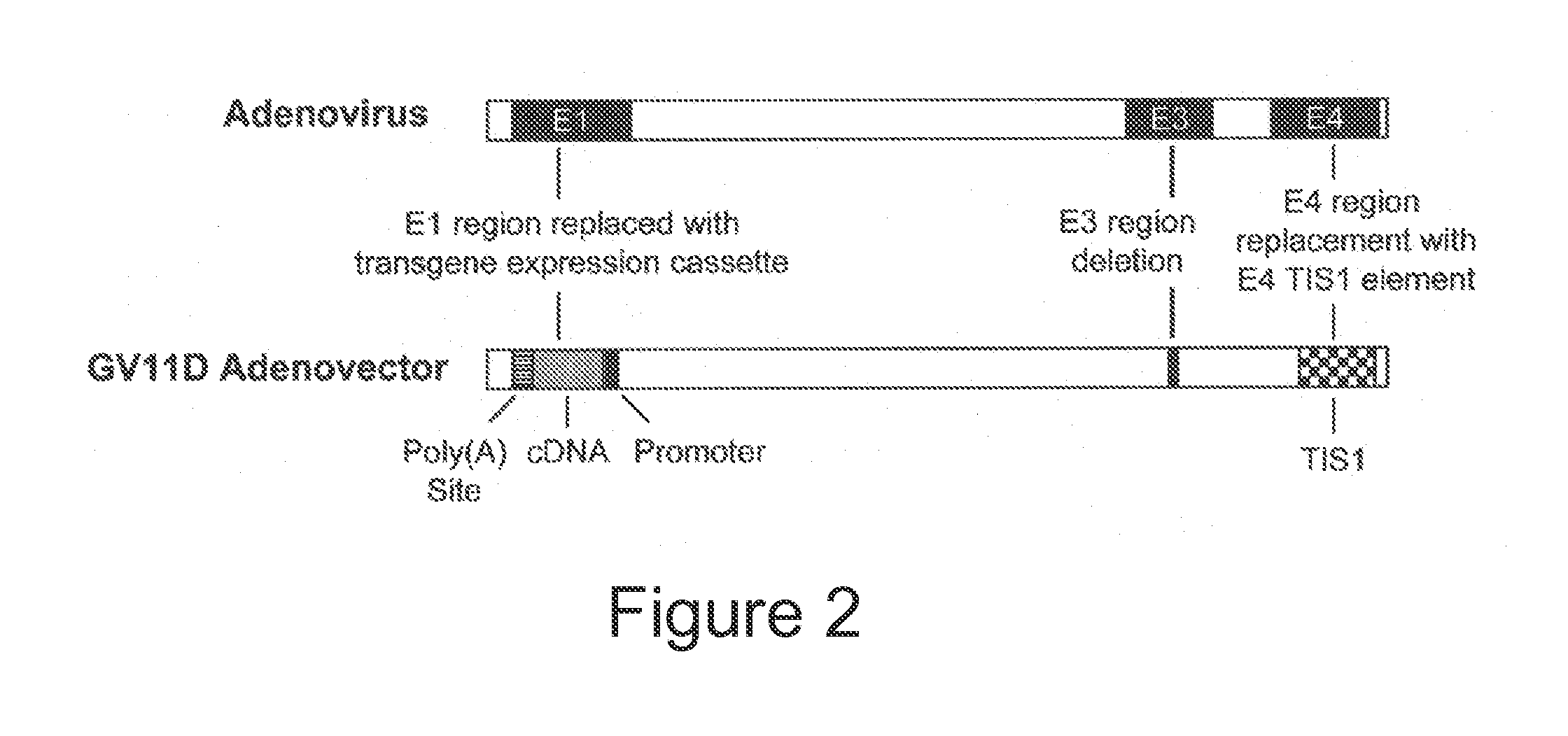Adenoviral vector encoding human atonal homolog-1 (HATH1)
a technology of human atonal homolog and vector, which is applied in the direction of dsdna viruses, peptide/protein ingredients, drug compositions, etc., can solve the problems of hair cells not being able to transduce signals to auditory nerves, hair cells can no longer bend cochlear hair cells, and permanent hearing loss
- Summary
- Abstract
- Description
- Claims
- Application Information
AI Technical Summary
Benefits of technology
Problems solved by technology
Method used
Image
Examples
example 1
[0057]This example demonstrates a method of generating the inventive serotype 5 adenoviral vector.
[0058]An adenovirus vector comprising a serotype 5 adenoviral genome with a deletion of the E1, E3, and E4 regions and encoding the Hath1 protein was constructed using the ADFAST™ protocol described in, e.g., U.S. Pat. No. 6,475,757. Using the ADFAST™ procedure, a plasmid was constructed that encodes an entire serotype 5 adenovirus vector genome. Isolation of a single genetic clone of the final vector genome was achieved by two sequential colony-growth steps in bacteria. This AdFAST™ plasmid was converted to a viral vector upon introduction into mammalian cells that complement for adenovirus vector growth. Subsequent expansion via serial passaging was then performed to generate adenovirus vector stocks. The steps to construct the Hath1—expressing serotype 5 adenoviral vector are summarized below.
Construction of Plasmids
[0059]A plasmid denoted pAd3511gfa2.HATH1.sv was digested with restr...
PUM
| Property | Measurement | Unit |
|---|---|---|
| Pharmaceutically acceptable | aaaaa | aaaaa |
| Nucleic acid sequence | aaaaa | aaaaa |
| Disorder | aaaaa | aaaaa |
Abstract
Description
Claims
Application Information
 Login to View More
Login to View More - R&D
- Intellectual Property
- Life Sciences
- Materials
- Tech Scout
- Unparalleled Data Quality
- Higher Quality Content
- 60% Fewer Hallucinations
Browse by: Latest US Patents, China's latest patents, Technical Efficacy Thesaurus, Application Domain, Technology Topic, Popular Technical Reports.
© 2025 PatSnap. All rights reserved.Legal|Privacy policy|Modern Slavery Act Transparency Statement|Sitemap|About US| Contact US: help@patsnap.com


